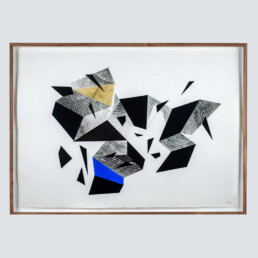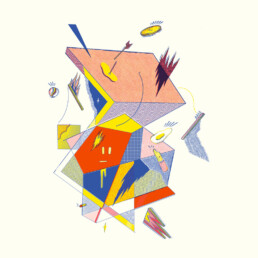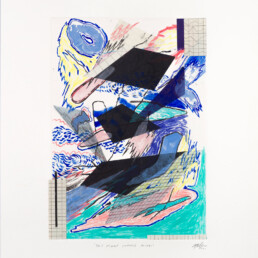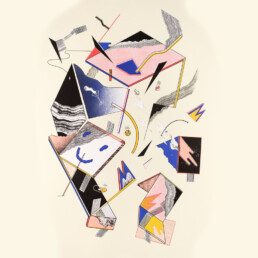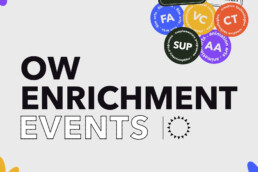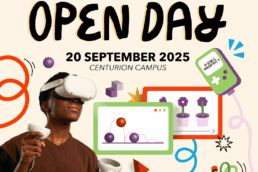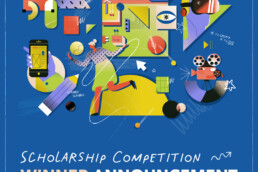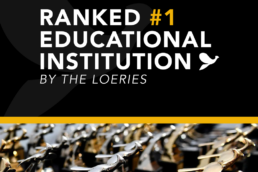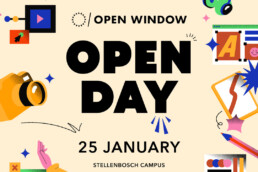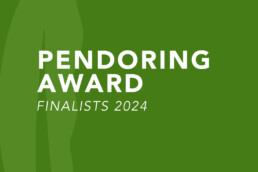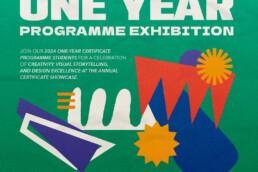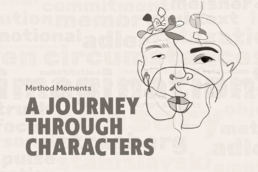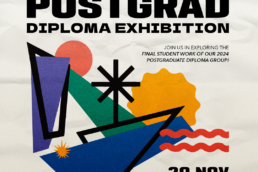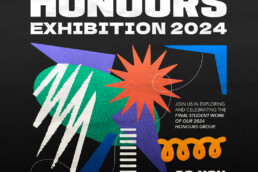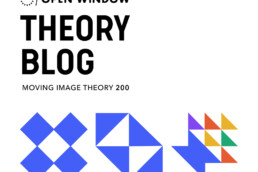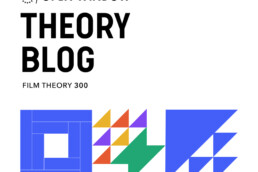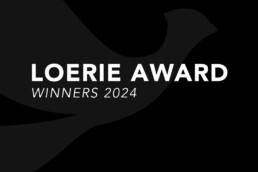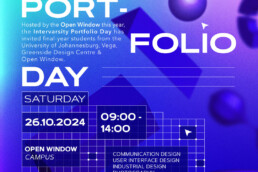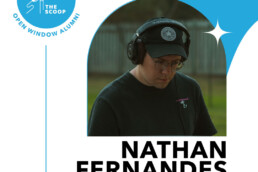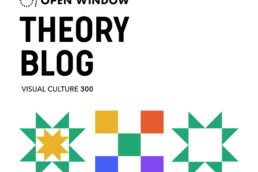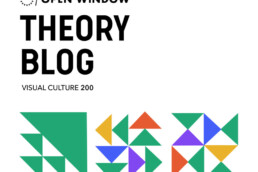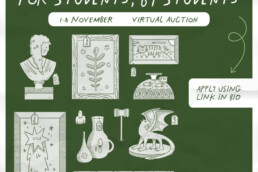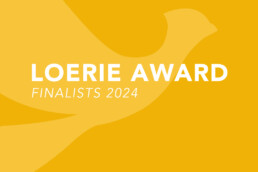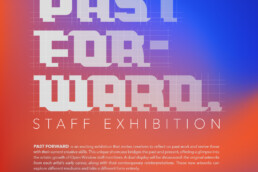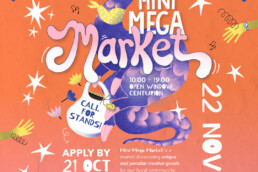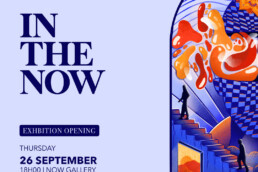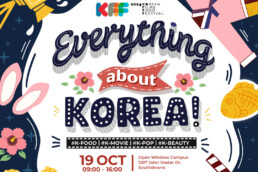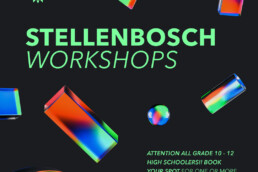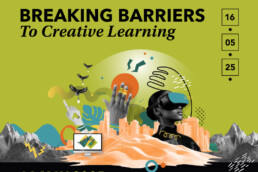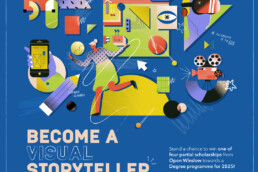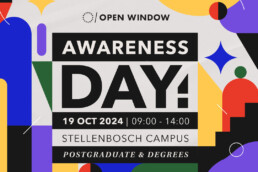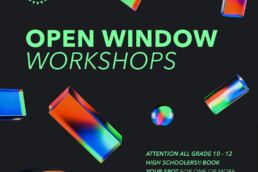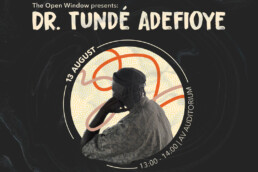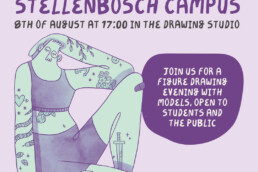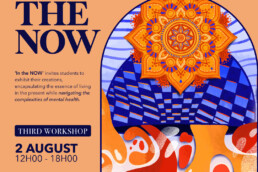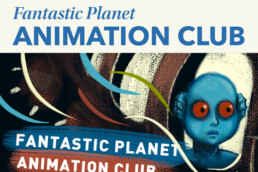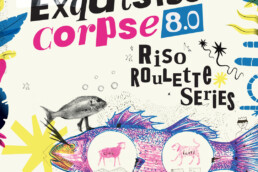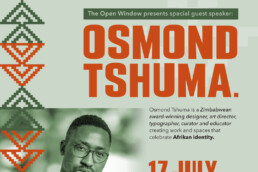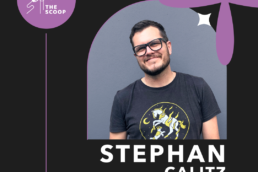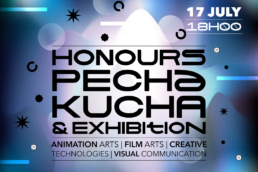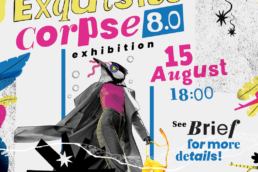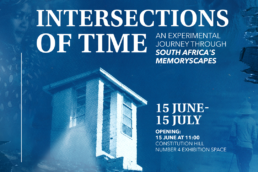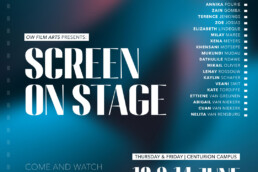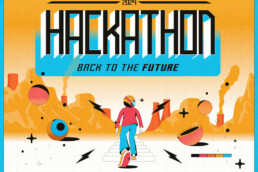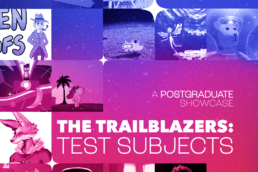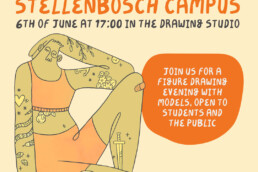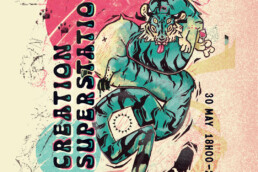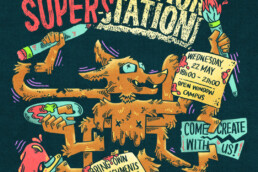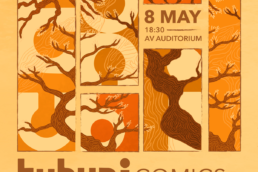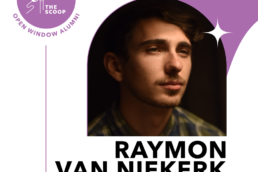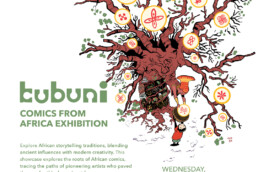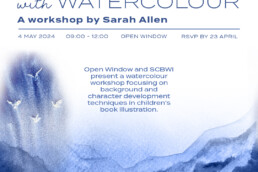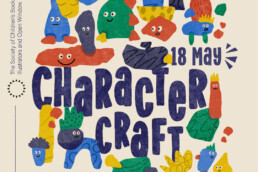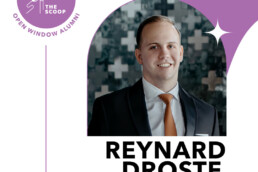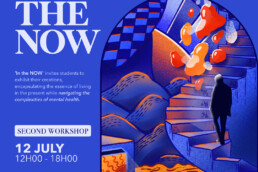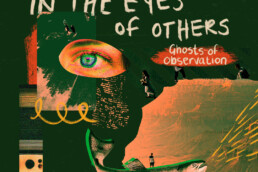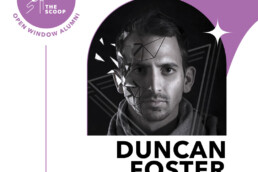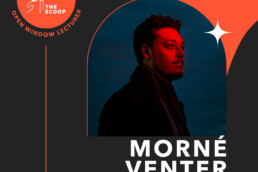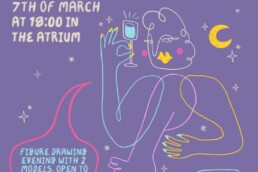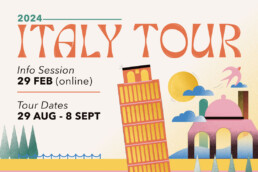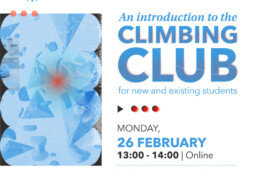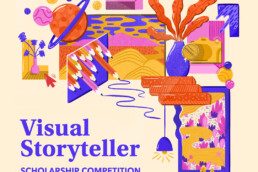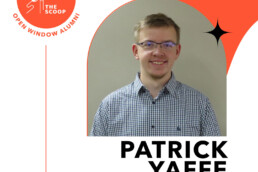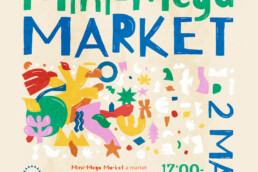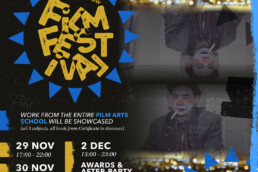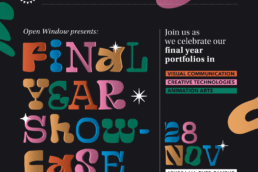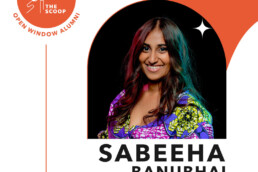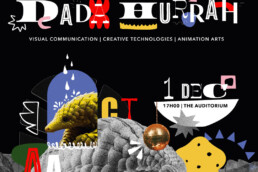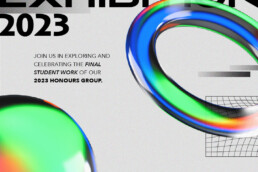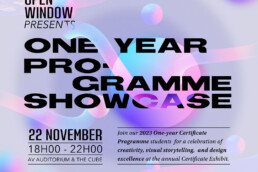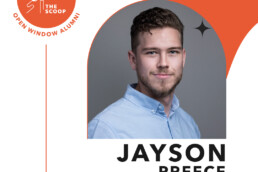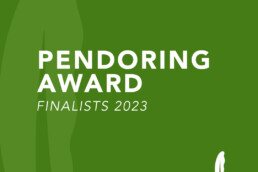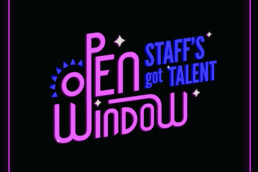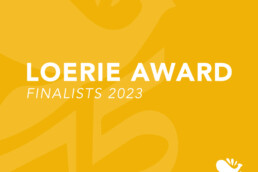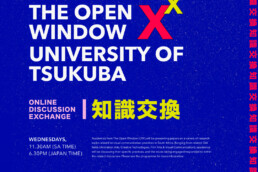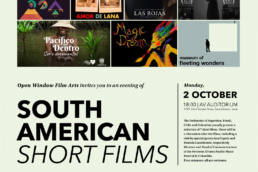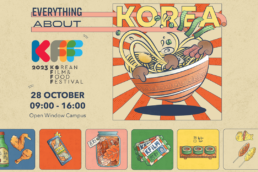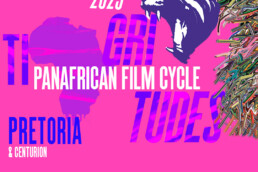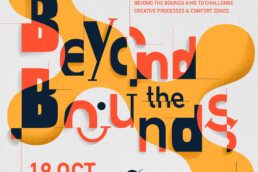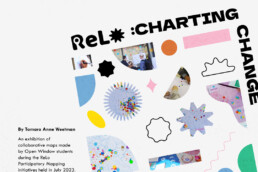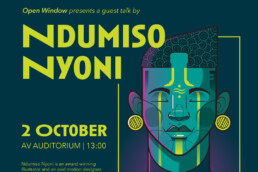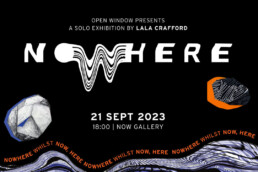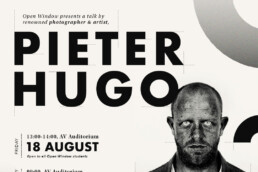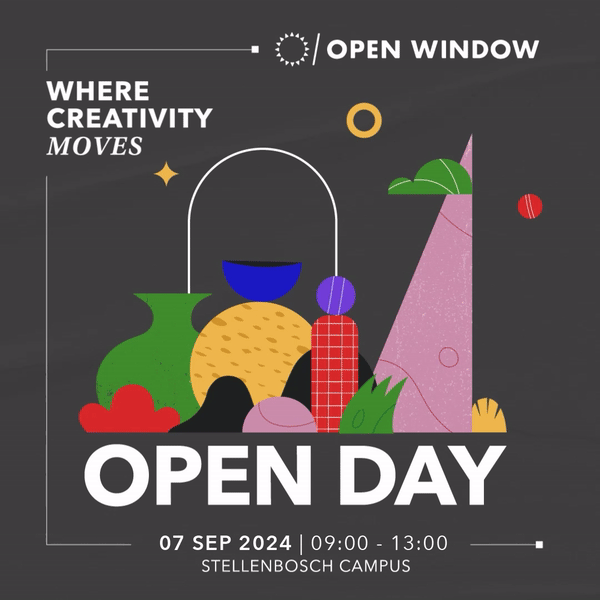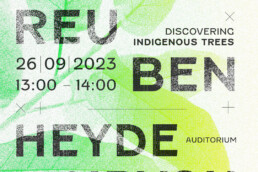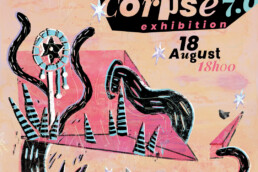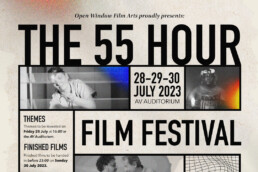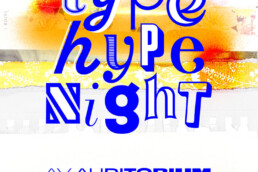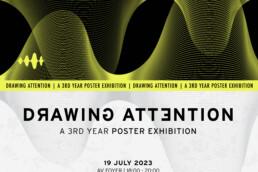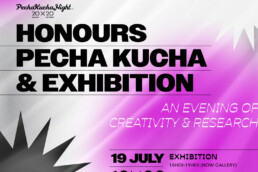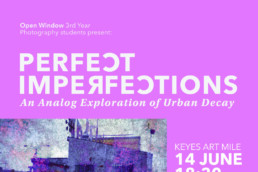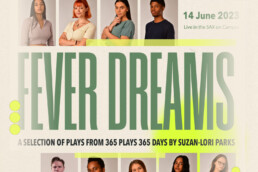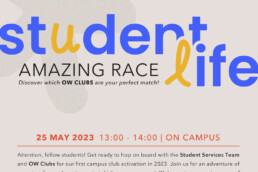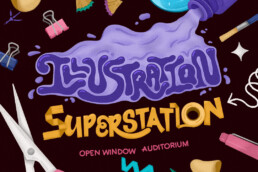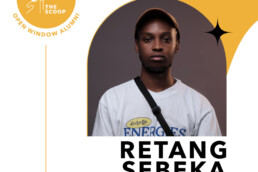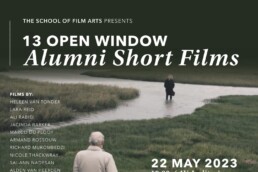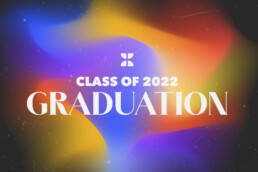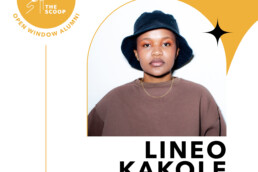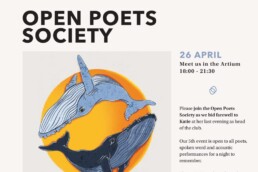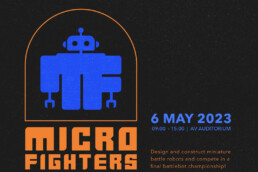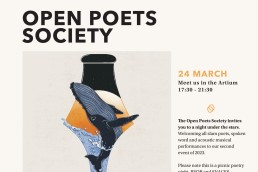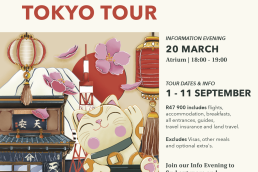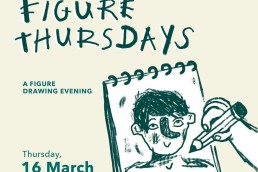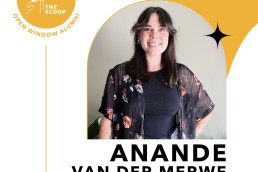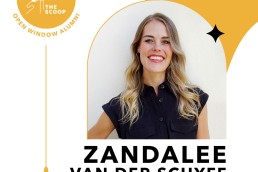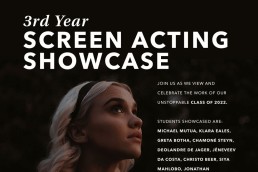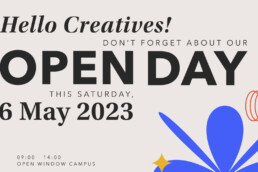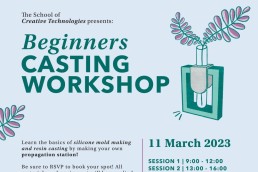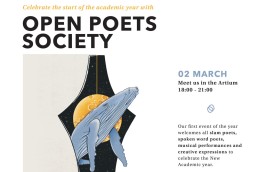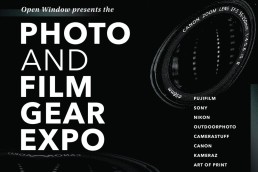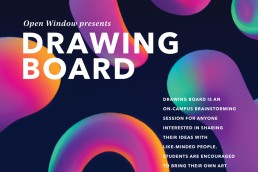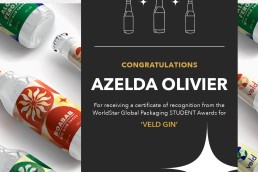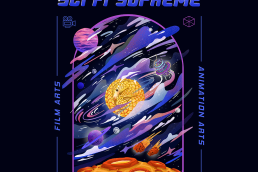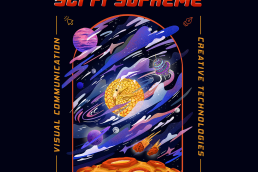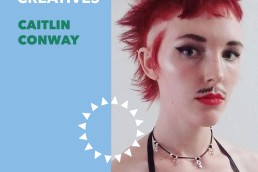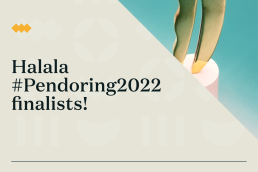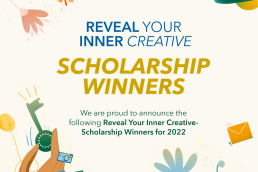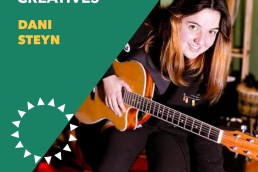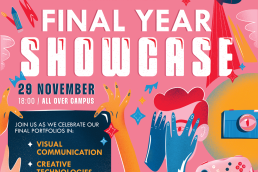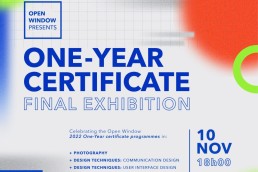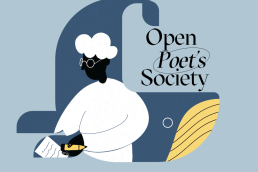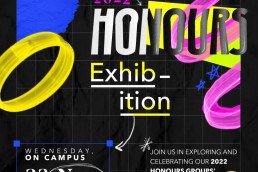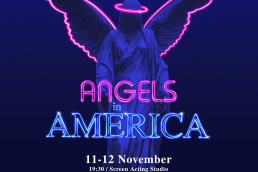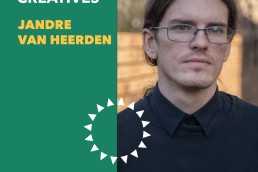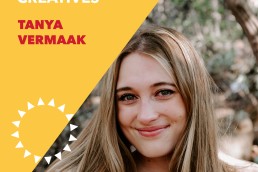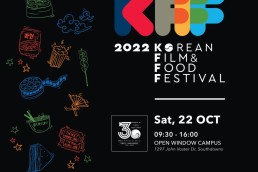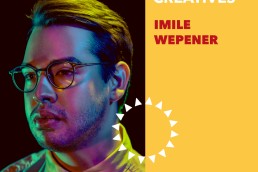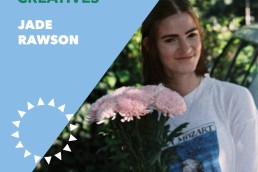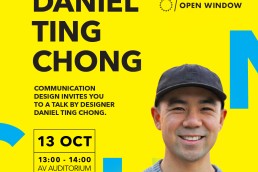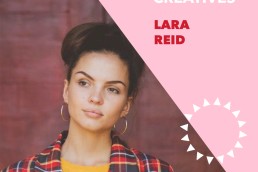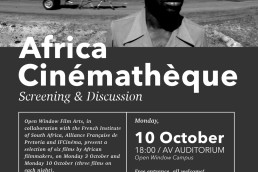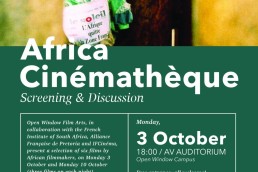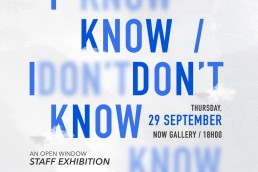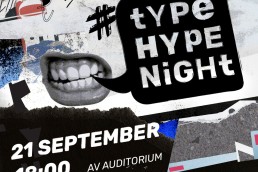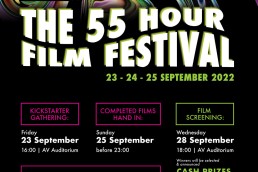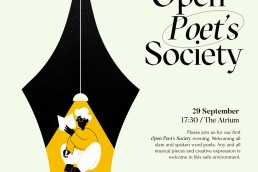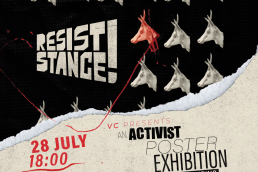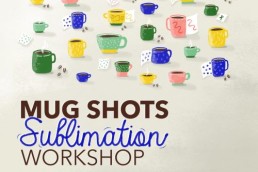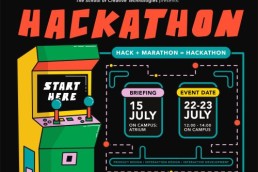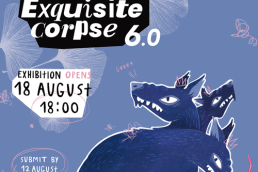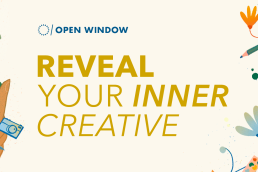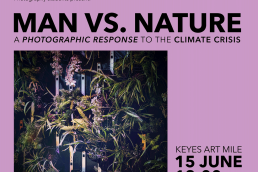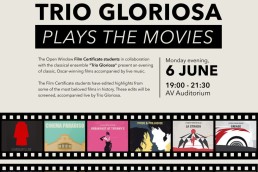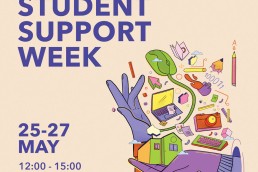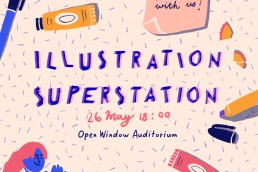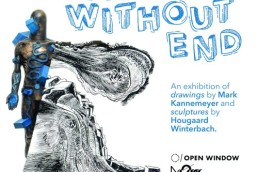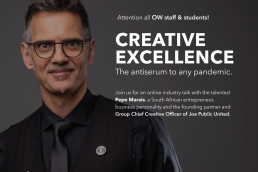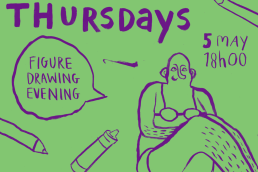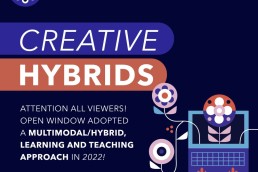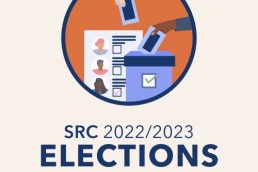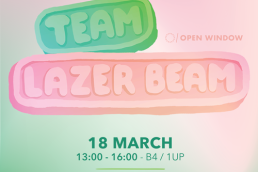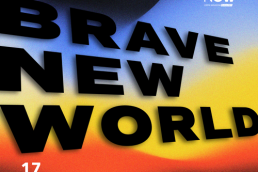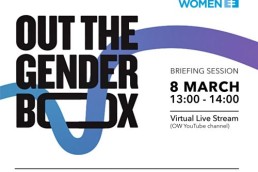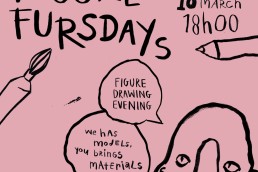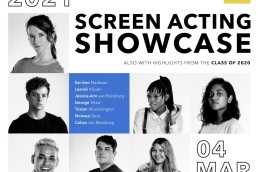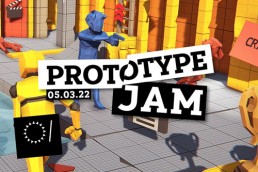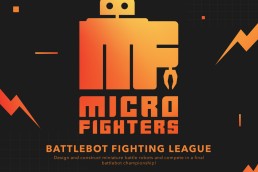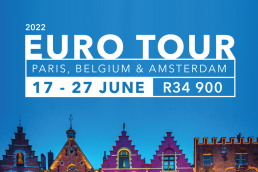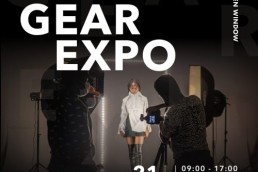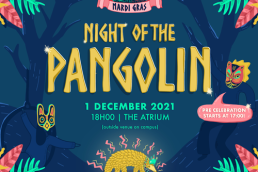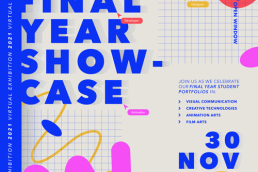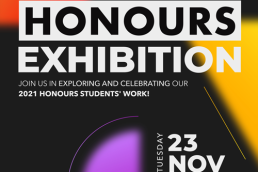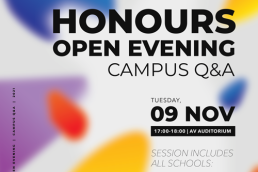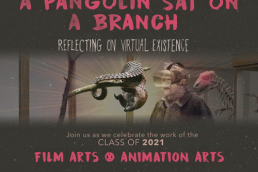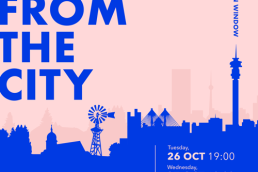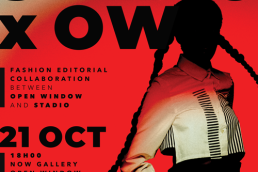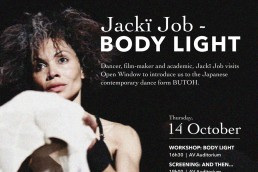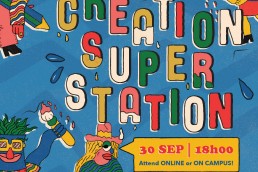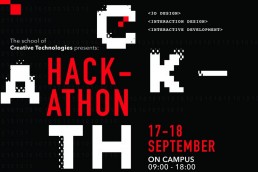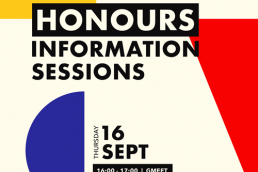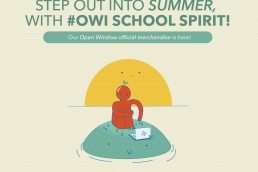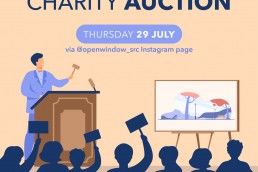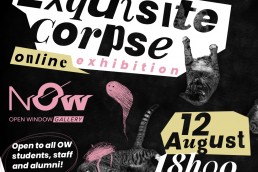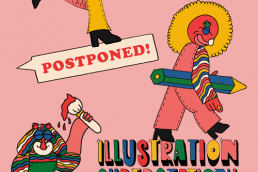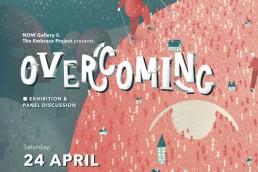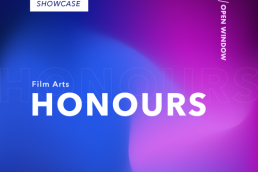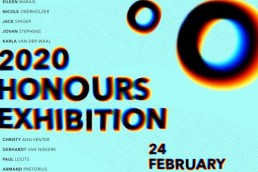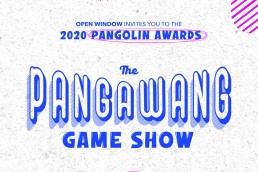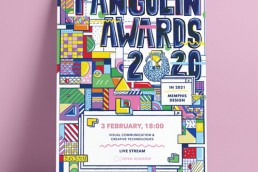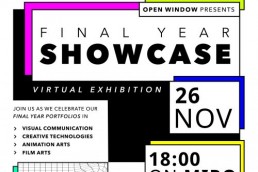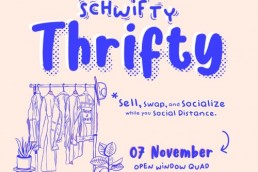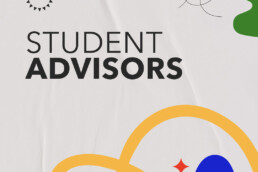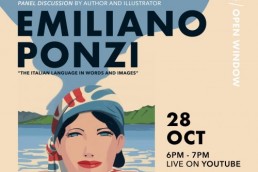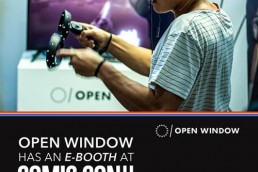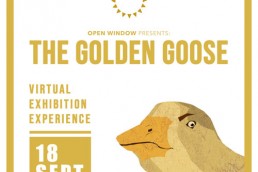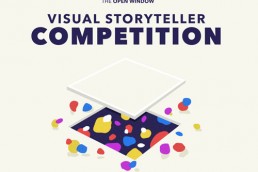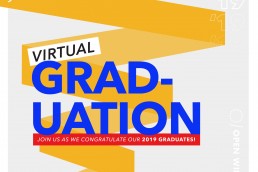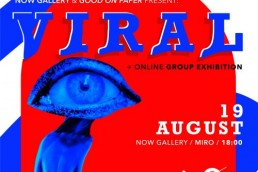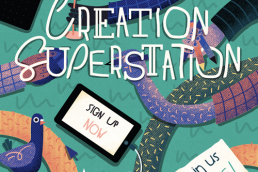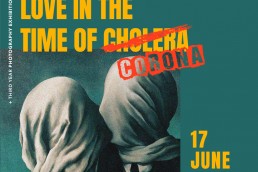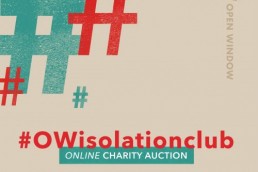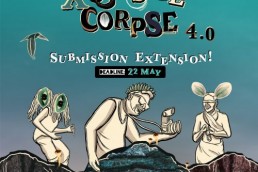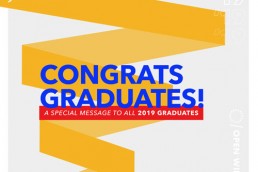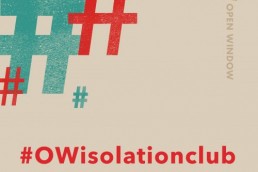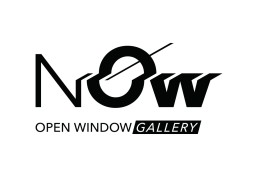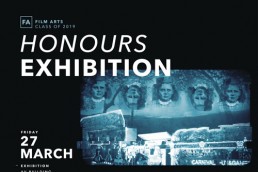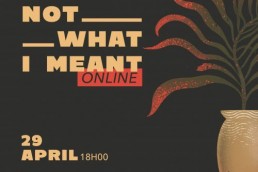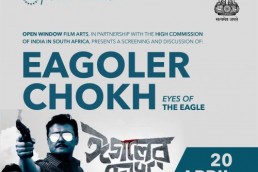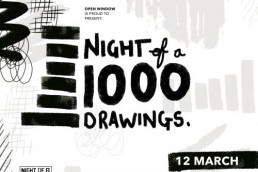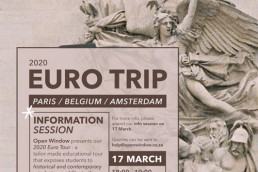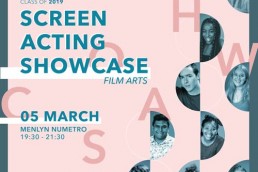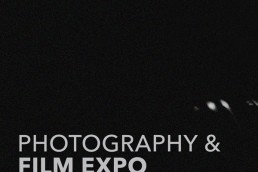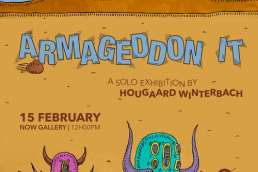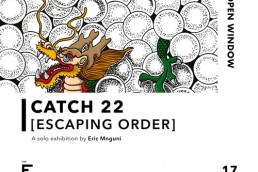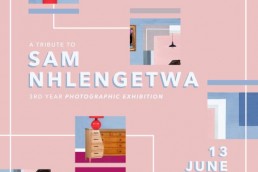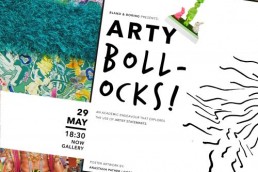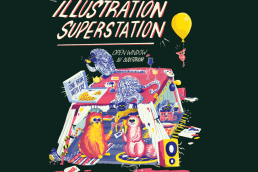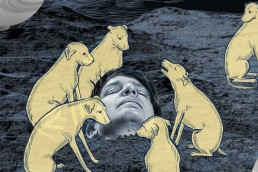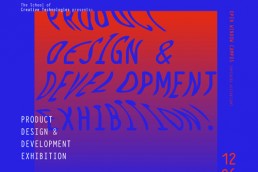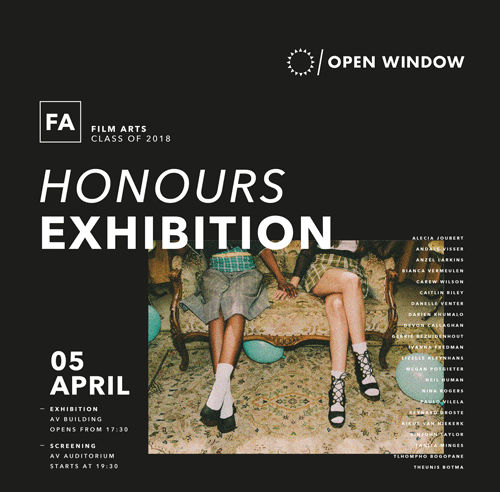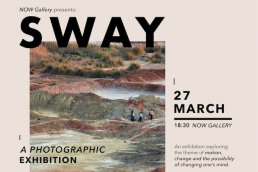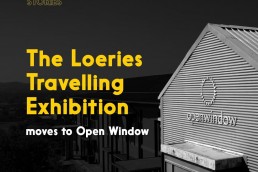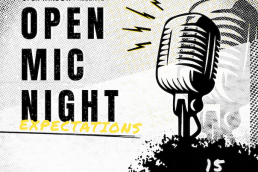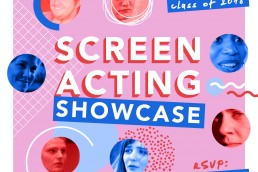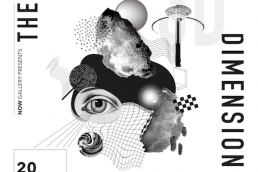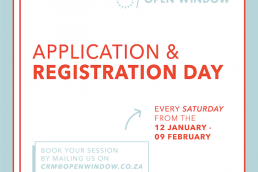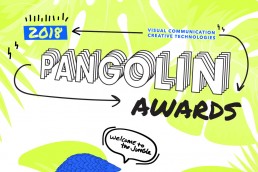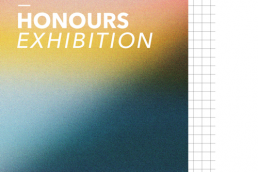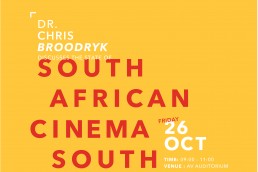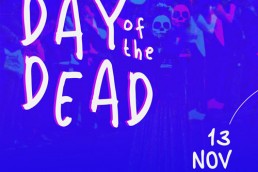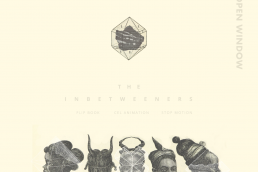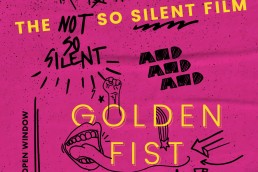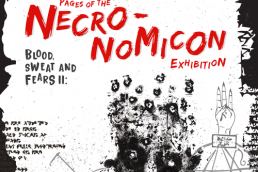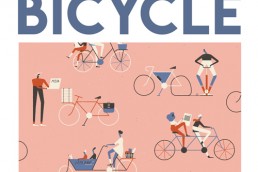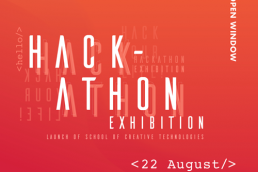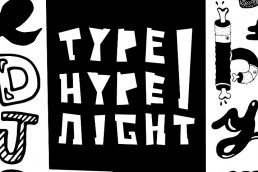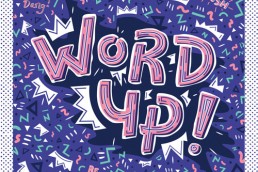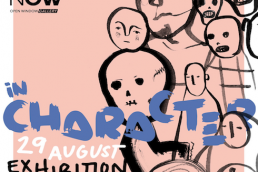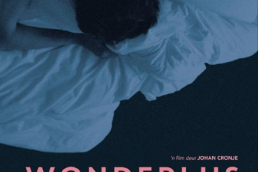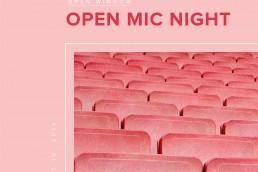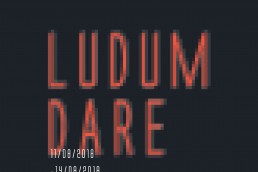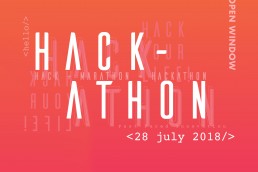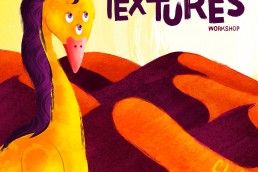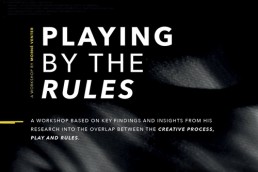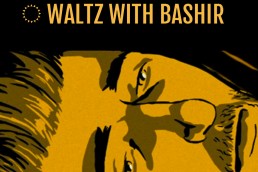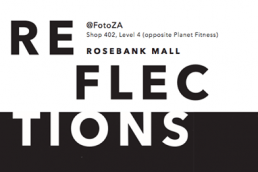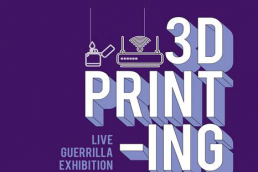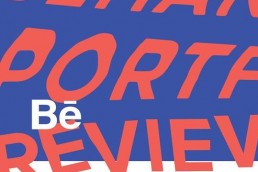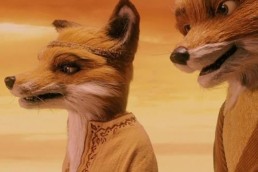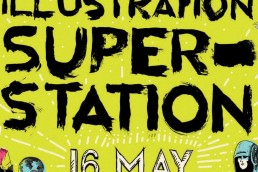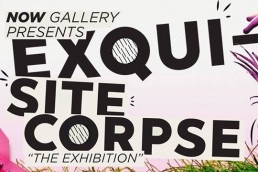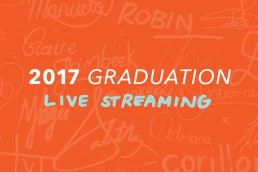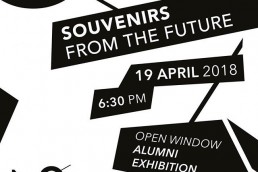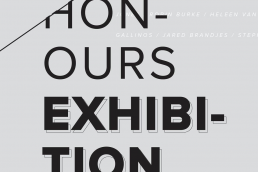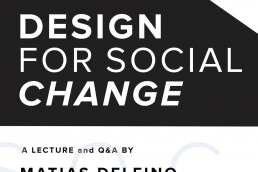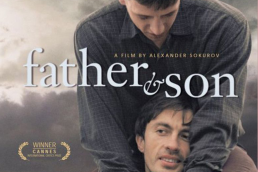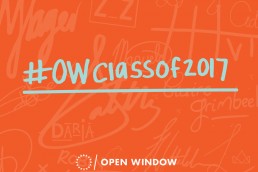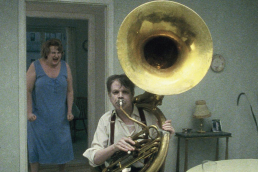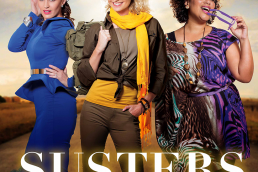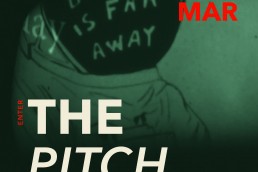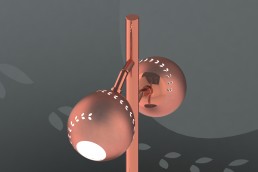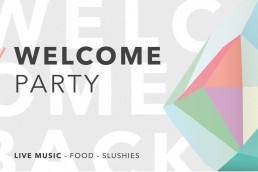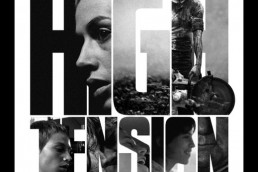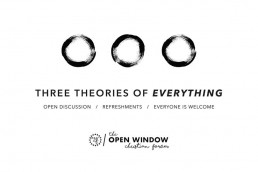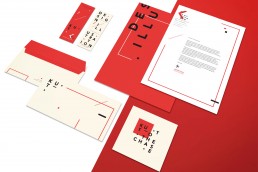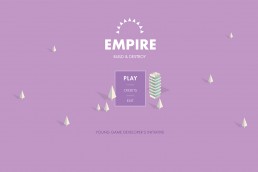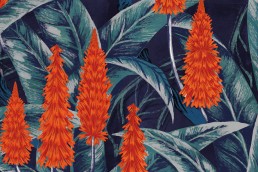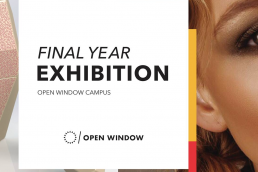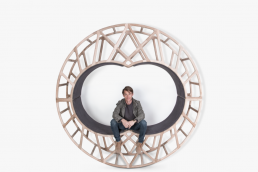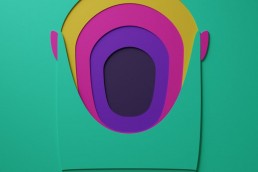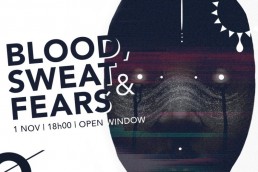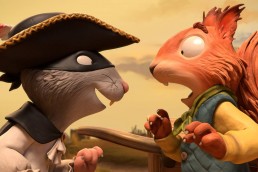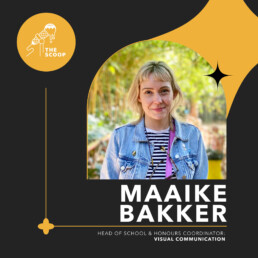

The Scoop - Maaike Bakker
How did you find out about Open Window and how did you start working for OW?
I had a few friends that studied at Open Window so it was always on my radar. They would often share glimpses of their projects with me, so I was always interested in seeing what they were doing. Their work made an impression on me which made me curious about Open Window. At a later stage, a part-time illustration lecturer job opened up and that’s when I got the opportunity to start teaching at Open Window. Eventually, I was presented with the chance to go full-time, and here I am…
How long have you been a lecturer?
In total, I think it’s been about 12 or 13 years now. My teaching career started when I was filling in for a lecturer at another institution. I really enjoyed it as the focus was creative and it allowed me to work with people. Working as a creative can at times get lonely, so this seemed like a good balance. I think it’s my 10th or 11th year of working (and teaching) at Open Window this year. As lecturers, we can always learn from each other and from our students which makes this an interesting environment to be in. It’s rewarding to work with other creatives. Every student is different and has a different way of thinking about the world which they express through their work. As a lecturer, if you pay attention there is a lot to be gained…
Can you briefly describe the different subjects within the VC department (illustration, photography, communication design), and how they work together to create a cohesive curriculum?
The three subjects in Visual Communication, including Communication Design, Photography and Illustration. These three subjects really complement and elevate each other. I think this is why many of our students end up pursuing a double major.
All subjects are focused on creative problem-solving through strategic thinking. The main focus is developing visual content that is not just visually engaging and creative, but that also articulates the intended message with conceptual clarity and consideration. We encourage students to be technically proficient whilst maintaining critical thinking abilities that result in work with conceptual rigour and a solid sense of imagination.
Photography involves the capturing and framing of a narrative. In the course, our students are presented with the opportunity to go on many exciting workshops and thus learn to shoot in a variety of settings, honing a good sense of all-around skills in their practice. They are also familiarised with the photography studio setting in our on-campus studio and learn how to use all the related equipment in a manner that allows them to arrive at imaginative and progressive results.
Communication design is focused on a wide range of print and digital design applications in the field of branding, packaging, layout design and advertising among others while maintaining a strong focus on skills development and conceptual thinking. Our communication design students thus learn to apply their skills with great confidence and are provided with a comprehensive understanding of the field, all whilst being provided with the space to push their concepts and execution, testing what is possible within the field.
Illustration is all about creating visual storytelling and articulating carefully constructed messages through the exploration of different techniques, styles and mediums whilst maintaining conceptual clarity. Our students are taught to work as independent thinkers and are encouraged to work traditionally as well as digitally. Students have the opportunity to work on various projects, such as illustrating children’s books, developing editorial illustrations, painting illustrated murals and creating illustrated advertisements.
In short, what we as Visual communicators do, is help shape the visual world around us by developing effective visual messages. Visuals form part of our daily lives and we encounter them in multiple places. But it is important to remember that these come from somewhere…(someone actually made this).
What career opportunities do graduates of the department typically pursue?
I would say it’s quite diverse and differs from specialisation to specialisation (or major to major) and of course also from person to person. I’m proud to say that our Visual Communication alumni have really helped to shape the South African creative landscape. Many of our alumni have become heavyweights and are now making great contributions to the creative industry, having participated with big brands and had involvement with massive projects.
Some students go work at an agency or smaller company for a short stint and then progress to form their own studio. We have many students that go solo and freelance. Having a business comes with its own stresses, so some prefer to only focus on doing something that just allows them to focus on their creative practice. These are typically students that work at agencies or smaller companies where they contribute to a team and contribute to the creative output in a team format. We try our best to equip students for all scenarios. One thing that many alumni students are doing is forging their own unique creative career paths, taking the skills they have acquired during their studies, and then figuring out how to construct their own career path around what they can do and know and what interests them.
Some of our students opt to continue with their studies by completing an Honours (and in some cases a Masters) in order to pursue a more academically oriented career. There are many options!
How do you prefer to stay up to date with what’s happening in the industry?
The industry is forever changing and things change at quite a fast pace. I suppose the creative industry is a very dynamic space. I enjoy researching what is happening in the creative industry on a global and local level. I have certain sites and print magazines that I like keeping up to date with (favourites are the site/blog ‘It’s nice that’ and print magazine ‘Elephant’ as well as the AIGA and AOI sites). In addition, I try to visit exhibitions and events relating to creative happenings. I also keep track of selective studios that create intelligent and creative work and try to stay up to date with the campaigns they’re working on. Beyond that, checking with people in the industry where possible is also important. Don’t just look on social media. Look beyond that and try to find out what the context of a project is. What was it for? How did the creative approach it? Other than just looking at the outcome, find out how the ideas developed and consider what the creative thinking was. This is just as important.
How do you balance teaching technical skills with fostering creativity and critical thinking in students?
Generally, our degree is structured in a way that allows students in the first year to mainly focus on acquiring new skills and obtaining an overview of the field. Once these more basic skills and overall understanding of the subject are in place, they go on to refine these skills, applying them to new, more advanced creative problems. Here the focus is no longer mostly focused on direct skill application but also on furthering conceptual development, making space for creative exploration and experimentation. This is then taken further, where students are encouraged to hone their own distinct creative voice. We (vc lecturers) want students to have strong technical skills in place, but they must also be able to share their thinking/the story behind the work. How can you make it meaningful to others?
Can you speak to any recent personal projects that you’re particularly proud of?
Sure. I create work as a visual artist as well as as an illustrator (in a more commercial capacity). Last year I had an exhibition ‘An answer to an unknown project’ at David Krut Projects (printmaking studio) in which I got to share a body of monotype prints and etchings that I developed in collaboration with their master printmakers in their workshop. This was a lot of fun as I was given the opportunity to develop new skills and also given complete freedom to try out new things within my practice.
In terms of more commercially oriented work, I also had the chance to work on a Nedbank campaign at the end of last year. Despite tight industry deadlines, this also allowed for a lot of creative freedom and it was exactly the type of brief I enjoy executing.
Top 5 favourite bands at the moment?
Whoa, this is a tough one. I’m a massive music fan so this is a tricky one to answer. A few bands/musicians I am listening to at the moment are Fever Ray, Young Fathers, Low, Yves Tumor and Tim Hecker.
Top 3 Podcasts?
At the moment I’m bingeing ‘Bandsplain’ (a podcast which explores the history and development of some key alternative/rock bands), the art podcast ‘Was mit Kunst?’(which features artist interviews with gallerist Johann König) and then I recently listened to the New Yorker podcast ‘Rabbit Hole’ (about what the internet is doing to us), which was also fascinating.
Can you suggest any great resources for students in the VC department?
True Grit offers some free digital brushes and textures which are great to use.
To our students and those with Adobe licences, there are also many great Kyle Webster brushes on Adobe as well as Adobe Fonts. In addition, to help get your work out there, there is the Adobe Portfolio that also links up with your Behance profile and is an easy tool to get your work out there in a professional manner.
Our students also have access to Skillshare which offers a lot of great tutorials.
What’s your go-to creative snack?
Blueberries (always) and that baked mustard pretzel snack from Woolworths.
Any favourite hobbies?
Walking my dog (and generally going for long, brisk walks). I really enjoy reading fiction but not sure that really counts as a hobby. Trying out new recipes and interesting food (mostly the eating part, not so much the cooking). I guess also making art, looking at art (or any creative work) and illustrating, but these are more than hobbies to me.
How do you envision the VC department evolving or growing in the future?
I see us embracing experimentation more going forward. This involves looking at ways in which we can more actively use the Open Window Maker space and its offerings in our projects. This can hopefully invoke a stronger sense of play, exploration and curiosity in us and our students.
In addition, we are looking to offer a postgraduate diploma soon which will allow students to complete an additional year before entering the industry. This is not only restricted to VC but will be available to all students. I am excited about this opportunity as I believe it will give students the possibility to expand their portfolio, further refine/exercise some of their practical skills, hone a new skill and obtain some entrepreneurial knowledge that will give them an advantage. Despite being well equipped to enter the industry after completing a 3-year degree, this might provide students with the chance to leave OW with an even more robust skill set and advanced creative thinking skills.
Do you have any advice for prospective students that are looking into doing their Bachelor of Arts in Visual Communication?
As everywhere, there is a lot of competition in the creative industry, so if you know that this is for you, then work hard. Don’t worry about whether your work is good enough or compare what you are doing to what others are making. Just make as much as you can. That’s what matters. In terms of your work, do not be afraid to try new/different things as that is what studying is for. Know that creativity is not always easy. It requires discipline. Don’t sit around waiting for inspiration. Get busy!
Related Posts
May 22, 2025
Animation SA X Annecy
April 29, 2025
Supplementary Programmes
April 23, 2025
Open Day (Stellenbosch) – 27 September
April 23, 2025
Open Day (Centurion) – 20 September
February 12, 2025
Scholarships Competition 2024 – Winners
January 31, 2025
Ranked No1 Educational Institution
November 11, 2024
Open Day (Centurion) – 25 Jan
November 11, 2024
Open Day (Stellenbosch) – 25 Jan
November 8, 2024
Pendoring Award Finalists 2024
October 24, 2024
One Year Programme Exhibition | 20 November
October 17, 2024
Method Moments: A Journey Through Characters
October 16, 2024
Postgrad Diploma Exhibition | 20 November
October 16, 2024
Honours Exhibition | 20 November
October 14, 2024
Theory Blog – Moving Image Theory 200
October 14, 2024
Theory Blog – Film Theory 300
October 14, 2024
Loerie Award Winners 2024
October 11, 2024
Intervarsity Portfolio Day | 26 October
October 11, 2024
The Scoop – Nathan Fernandes
October 10, 2024
Theory Blog – Visual Culture 300
October 10, 2024
Theory Blog – Visual Culture 200
October 10, 2024
Virtual FSBS Art Auction | 1- 8 November
October 8, 2024
Loerie Award Finalists 2024
October 1, 2024
Past Forward Exhibition | 24 October
September 27, 2024
Mini Mega Market | 22 November
September 25, 2024
In the Now Exhibition | 26 September
September 13, 2024
Korean Food and Film Festival | 19 October
August 19, 2024
High School – Stellenbosch Workshops
August 1, 2024
Scholarship Competition 2024
July 30, 2024
Awareness Day – Stellenbosch – 19 October
July 29, 2024
High School – August Workshops
July 29, 2024
Guest Speaker: Tundé Adefioye – 13 August
July 24, 2024
Figure Thursday (Stellenbosch) – 08 August
July 19, 2024
In the Now: Third Workshop – 02 Aug
July 12, 2024
Fantastic Planet Animation Club Screening – 24 July
July 8, 2024
Exquisite Corpse 8.0 – Riso Roulette Series
July 3, 2024
Guest Speaker: Osmond Tshuma | 17 July
June 12, 2024
The Scoop – Stephan Calitz
June 11, 2024
Honours Pecha Kucha & Exhibition | 17 July
June 5, 2024
Exquiste Corpse 8.0 | 15 August
May 31, 2024
Screen on Stage | 13 & 14 June
May 23, 2024
Figure Thursday (Stellenbosch) | 06 June
May 16, 2024
Creation Superstation (Stellenbosch) | 30 May
May 13, 2024
Creation Superstation (Centurion) | 22 May
April 17, 2024
The Scoop – Raymon van Niekerk
April 11, 2024
The Kubuni: Comics from Africa Exhibition – 24 April
April 10, 2024
Experimenting with Watercolour – 4 May
March 6, 2024
The Scoop – Reynard Droste
March 4, 2024
Pages in Progress – 30 May
February 27, 2024
In the Now: Second Workshop – 12 July
February 27, 2024
In The Eyes of Others: Ghosts of Observation – 13 March
February 26, 2024
The Scoop – Duncan Foster
February 13, 2024
Photo & Film Gear Expo – 19 February
February 12, 2024
The Scoop – Morne Venter
February 12, 2024
Figure Thursday – 07 March
February 12, 2024
Italy Tour 2024
February 9, 2024
Climbing Club Information Session
December 6, 2023
Scholarships 2023 Competition – Winners
November 24, 2023
The Scoop – Patrick Yaffe
November 22, 2023
Mini Mega Market | 02 May
November 22, 2023
Open Window Film Festival
November 13, 2023
Final Year Showcase | 28 Nov
November 10, 2023
The Scoop – Sabeeha Banubhai
November 8, 2023
Pangolin Awards 2023 | 1 Dec
October 31, 2023
Honours Exhibition 2023
October 31, 2023
One-Year Programme Showcase
October 11, 2023
The Scoop – Jayson Preece
October 9, 2023
Pendoring Award Finalists 2023
October 6, 2023
Open Window Staff’s Got Talent Show
October 5, 2023
Loerie Award Finalists 2023
October 4, 2023
Open Window X University of Tsukuba
September 29, 2023
South American – Short Films
September 26, 2023
Korean Film & Food Festival
September 17, 2023
Tigritudes Screenings – Panafrican Film Cycle
September 14, 2023
Beyond the Bounds Exhibition – 19 Oct
September 13, 2023
ReLo: Charting Change – Tamara Weetman
September 13, 2023
Guest Talk – Ndumiso Nyoni
August 13, 2023
Nowhere – A Solo Exhibition by Lala Crafford
August 10, 2023
Guest Talk – Pieter Hugo
August 4, 2023
Open Day – Stellenbosch – 07 September 2024
August 3, 2023
Guest Talk: Reuben Heydenrych – 26 Sept
July 28, 2023
Exquisite Corpse 7.0 – 16 August
July 20, 2023
55-Hour Film Festival
July 19, 2023
Type Hype Night – 02 August
July 12, 2023
Drawing Attention – 19 July
July 5, 2023
Hackathon – 21 & 22 July
June 6, 2023
Perfect Imperfections – 14 June
May 31, 2023
Fever Dreams – 14 June
May 23, 2023
Student Life – Amazing Race | 25 May
May 23, 2023
Designed Dimensions – 31 May
May 22, 2023
MakerSpace Dashboard
May 16, 2023
Illustration Superstation
May 15, 2023
The Scoop – Retang Sebeka
May 15, 2023
13 OW Film Arts Alumni Short Films
May 8, 2023
Class of 2022 – Graduation
April 13, 2023
The Scoop – Lineo Kakole
April 11, 2023
Open Poets Society | A Change of Hands
March 22, 2023
MicroFighters 2023 – 30 May
March 8, 2023
Open Poets Society – 24 March
March 7, 2023
Tokyo Tour – 20 March
March 6, 2023
Figure Thursdays – 16 March
March 2, 2023
The Scoop – Anande van der Merwe
March 2, 2023
The Scoop – Zandalee van der Schyff
February 28, 2023
3rd Year Screen Acting Showcase – 17 March
February 24, 2023
It’s Not a Big Deal – 09 March
February 24, 2023
Open Day – 06 May
February 22, 2023
Beginner’s Casting Workshop – 11 March
February 20, 2023
Open Poets Society – 02 March
February 16, 2023
Photo & Film Gear Expo – 20 Feb
February 16, 2023
Drawing Board – 23 Feb
January 23, 2023
WorldStar Global Packaging Awards – Azelda Olivier
November 10, 2022
Pangolin Awards 2022 – Animation Arts & Film Arts | 02 December
November 8, 2022
The Creatives – Caitlin Conway
November 1, 2022
Pendoring Finalists 2022
November 1, 2022
Reveal Your Inner Creative – Scholarship Winners
October 31, 2022
The Creatives – Dani Steyn
October 28, 2022
Final Year – Student Showcase | 29 November
October 27, 2022
One-Year Programme Exhibition | 10 November
October 26, 2022
Open Poets Society | 09 Nov
October 26, 2022
Honours Exhibition | 23 Nov
October 18, 2022
The Creatives – Jandre van Heerden
October 9, 2022
The Creatives – Tanya Vermaak
October 7, 2022
Korean Film and Food Festival | 22 October
October 5, 2022
The Creatives – Imile Wepener
September 29, 2022
The Creatives – Jade Rawson
September 28, 2022
Guest Speaker: Daniel Ting Chong | 13 October
September 25, 2022
The Creatives – Lara Reid
September 23, 2022
Africa Cinémathèque | 10 October
September 23, 2022
Africa Cinémathèque | 03 October
September 14, 2022
I know / I don’t know | 29 Sep
September 7, 2022
Type Hype Night | 21 Sep
September 6, 2022
The 55-Hour Film Festival | 23 Sep
September 6, 2022
Muzzi Rajah: How to Build your Brand | 22 Sep
September 6, 2022
Open Poets Society | 29 Sep
July 15, 2022
Resist/Stance! Exhibition
July 10, 2022
Mug Shots Sublimation Workshop!
July 8, 2022
Hackathon
June 21, 2022
Exquisite Corpse 6.0
June 14, 2022
Reveal Your Inner Creative – Scholarship Competition
May 27, 2022
Trio Gloriosa, Plays the Movies | 06 June
May 23, 2022
Student Support Week | 25 -27 May
May 17, 2022
Illustration Superstation | 26 May
May 3, 2022
World Without End Exhibition | 14 May
April 28, 2022
Figure Thursdays | 05 May
March 29, 2022
Ludum Dare 50 [Game Jam] – 02 – 04 April
March 15, 2022
Multimodal Teaching Approach
March 14, 2022
2022/23 SRC Elections – 01 April
March 10, 2022
Meet Team Lazerbeam | 18 March
March 7, 2022
Brave New World | 17 March
March 2, 2022
Figure Fursdays | 10 March
February 24, 2022
Class of 2021 Screen Acting Showcase | 04 March
February 23, 2022
Prototype Jam | 05 March
February 15, 2022
MicroFighters | 30 April
February 15, 2022
Euro-Tour 2022
February 13, 2022
Photo & Film Gear Expo
November 12, 2021
Night of the Pangolin | 01 December
November 9, 2021
Final Year Showcase 2021 | 30 November
November 2, 2021
Honours Exhibition | 23 November
October 26, 2021
Honours Open Evening | 09 November
October 20, 2021
Scenes from the City | 26-27 October
October 15, 2021
STADIO x OW Exhibition | 21 October
October 4, 2021
Jackï Job – Body Light | 14 October
September 20, 2021
Creation Superstation | 30 September
September 15, 2021
Hackathon | 17 & 18 September
September 2, 2021
Honours Information Sessions
August 26, 2021
OW Merchandise
July 21, 2021
@OWRebuildSA Art Auction | 29 July
July 16, 2021
Exquisite Corpse 5.0
July 6, 2021
Blog
June 1, 2021
Mini Mars Rover Competition | 05 June
May 5, 2021
Illustration Superstation | 20 May
April 14, 2021
NOW Gallery and The Embrace Project presents OVERCOMING
March 12, 2021
Film Arts Honours – 17- 19 March
February 10, 2021
Honours Exhibition 2020
February 1, 2021
The Pangolin Awards 2020 (FA & AA)
January 26, 2021
The Pangolin Awards 2020 (VC & CT)
January 21, 2021
COVID Compliance Form
November 4, 2020
Final Year Showcase Portfolios
October 21, 2020
Schwifty Thrifty
October 19, 2020
Year-End Function
October 14, 2020
OW Student Advisors
October 2, 2020
Panel discussion with Italian artist Emiliano Ponzi
September 23, 2020
Comic Con Africa
September 17, 2020
OW Feedback Form
September 15, 2020
Golden Goose Exhibition
September 8, 2020
Visual Storyteller Bursary Competition
August 21, 2020
Virtual Graduation – Class of 2019
August 12, 2020
NOW Gallery and Good on Paper present VIRAL – 19 August
July 20, 2020
Creation Superstation – 29 July
June 9, 2020
Love in the time of Corona – 17 June
May 21, 2020
OWIsolationclub Online Charity Auction
May 21, 2020
Exquisite Corpse 4.0 Online
April 9, 2020
Congrats Graduates
April 2, 2020
Isolation Club
April 1, 2020
Now Gallery
March 16, 2020
Film Arts Honours Exhibition | 27 March
March 11, 2020
That’s not what I meant | 29 April
March 4, 2020
Eagoler Chokh Screening | 20 April
March 4, 2020
Night of a 1000 Drawings | 12 March
March 4, 2020
Euro Trip Information Session | 17 March
February 18, 2020
Class of 2019 Screen Acting Showcase | 05 March
February 5, 2020
Photography & Film Expo | 10 February
January 22, 2020
Armageddon it | 15 February
July 1, 2019
Catch 22 [escaping order | 17 July
May 21, 2019
Artybollocks | 29 May
May 21, 2019
Illustration Superstation | 23 May
April 23, 2019
Exquisite Corpse 3.0 | 02 May
April 10, 2019
Product Design and Development Exhibition | 12 -26 April
April 1, 2019
Film Arts Honours Exhibition | 05 April
March 18, 2019
SWAY: A Photographic Exhibition | 27 March
March 11, 2019
Loeries Travelling Exhibition | 18 March
March 7, 2019
Open Mic Night | 15 March
February 25, 2019
Screen Acting Showcase | 28 February
February 11, 2019
Launch Party | 15 February
January 29, 2019
The Third Dimension | 20 February
January 14, 2019
Applications and Registrations
November 5, 2018
The Pangolin Awards (VC & CT) | 29 November
October 25, 2018
Final Year Showcase | 22 November
October 24, 2018
BA Honours Graduate Exhibition | 20 November
October 12, 2018
South African Cinema: Dr Chris Broodryk | 26 October
October 11, 2018
Day of the Dead Party | 13 November
September 27, 2018
The Inbetweeners: Workshop | 05 October
September 17, 2018
The not so silent film and Golden fist awards | 21 September
September 16, 2018
Blood, Sweat and Fears II: Pages of the Necronomicon | 24 October
September 5, 2018
All I Wanna Do Is Bicycle | 26 September
August 16, 2018
Monster Hunt Screening | 22 October
August 13, 2018
Type Hype Night | 02 August
August 13, 2018
Word Up Workshop | 21 August
August 12, 2018
In Character: Exhibition and Performance | 29 August
August 10, 2018
Wonderlus Screening | 31 August
August 9, 2018
Korean Film and Food Festival | 20 October
August 6, 2018
Open Mic Night | 10 August
August 5, 2018
Photo Plus Africa | 19 October
July 26, 2018
Ludum Dare | 11 August
July 16, 2018
OWI Annual Hackathon | 28 July
July 13, 2018
Welcome Back Party – House of Sin | 20 July
July 10, 2018
Testing Textures Workshop | 24 July
June 25, 2018
Playing by the Rules | 11 July
June 8, 2018
Waltz with Bashir Screening | 14 June
May 31, 2018
3D Rapid Prototyping | 6 June
May 3, 2018
Behance Portfolio Review | 12 May
May 3, 2018
Fantastic Mr. Fox Screening | 7 May
May 3, 2018
Illustration Superstation | 16 May
April 26, 2018
Exquisite Corpse | 10 May
April 3, 2018
2017 Graduation – Live Streaming | 6 April
March 29, 2018
Matias Delfino: Design for Social Change
March 28, 2018
Father and Son – Film Salon
March 27, 2018
Graduation
November 16, 2017
Final Year Student: Exhibition | 28 November
The annual Final Graduate Showcase, for…
